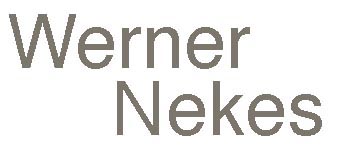Amalgam
![]() 1976, 16 mm, Farbe, 72 Min.
1976, 16 mm, Farbe, 72 Min.
Sound: Anthony Moore.
"a sequence of 4 films: knots, texture, web, plaited--four approaches of writing with light to reflect the possibilities of painting within film."--W.N.
"This film not only achieves painting's high pictorial quality, with 24 living' canvasses per second, PLAITED in fact leaves Pointilism far behind. If filming really is painting with light, as Louis Delluc once postulated, then it was surely only a matter of time before filmmakers would turn to the principles of Pointilism. For a long time the innovator Nekes pondered about this project . The result, in its effect on the audience, exceeds all expectations..."--Ingo Petzke. (Aus: filmmakers cooperative catalogue No. 7)
This film not only achieves painting's high pictorial quality, with 24 "living" canvasses per second Geflecht in fact leaves Pointillism far behind.
Double to quadruple exposures of the original material with normal exposure of subject at 24 frames per second and the most various techniques of single frame exposure with different point distribution. Optical processing: double exposure with diverse phasings of freeze frames of varying length (from 10 to 120), fading in and out constantly. Freeze frame (of stills and four picture sequences), shots (nonanimation) with triple-exposure of point planes in mountainous waves of light.
"If filming really is painting in light, as Louis Delluc once postulated, then it was surely only a matter of time before film makers would turn to the principles of Pointillism. For a long time Nekes the innovator pondered this project. The result, in its effect on the audience, exceeds all expectation...
In Nekes' films it is increasingly difficult to maintain an intellectual distance to the images presented. The reason: the inner structure grows more complex at precisely the same rate at which the outer structure is reduced. In this development Geflecht represents a culmination and it is incomprehensible why (inattentive) viewers still react so violently to Nekes' radical aesthetics. The stumbling blocks of outer structures, ostensibly protruding in an all too jarring manner, have all but disappeared. However, even those not wholly fascinated and thrilled, might make an interesting discovery pertaining to the technique employed. Up to now, one part of T-WO-MEN excepted, Nekes has processed his material in the camera itself. No one save Stan Brakhage has exploited the potential of the 16 mm camera to the same degree as Nekes, discovering and inventing new possibilities all along. Geflecht breaks radically with this tradition, since it was given shape only in the optical printer. This is new for Nekes, and it remains to be seen whether it is a unique diversion, necessitated by stylistic considerations, or a departure to new shores.
More in line with the known Nekes is the programmatic title of the film, which refers to its optical processing. 11 shots, the length of which ranges from 18 seconds to 3 minutes 46 seconds, are arranged in loose sequence. Each individual frame from the original material, in part processed in the camera, is extented 10 to 120 times. During this extension the original image is faded out slowly while the following is faded in at an equally slow pace. This creates dissolving segments linking one picture to the next and weaving them together to form a network, Geflecht. (Ingo Petzke, in: Bericht über die 22. Westdeutschen Kurzfilmtage, Oberhausen 1976).
If you would like to present this film in public (cinema, museum, institution) please send a mail with your request.
Do you want to buy this film? Shop...
